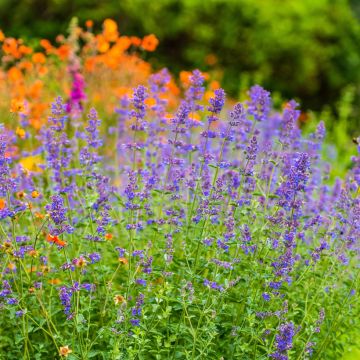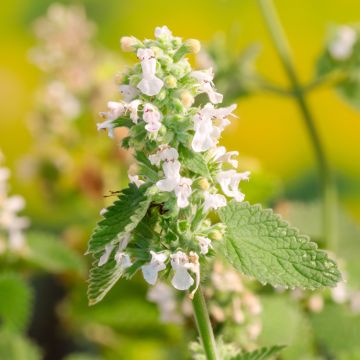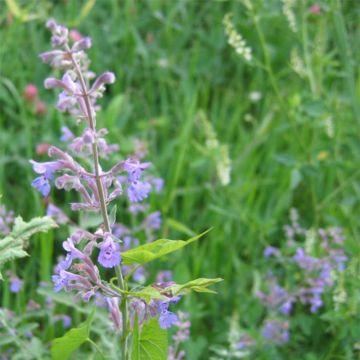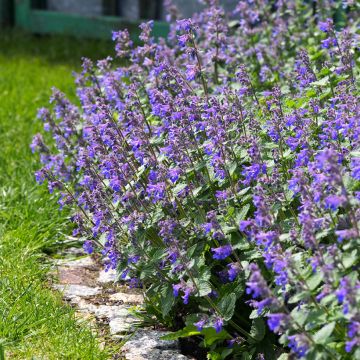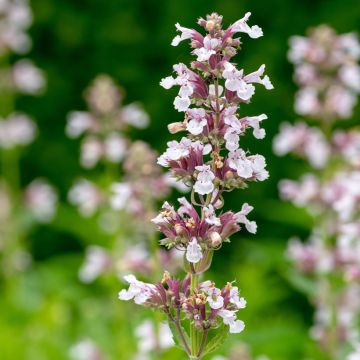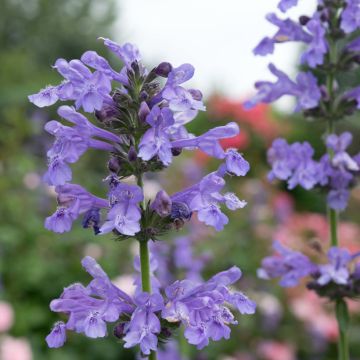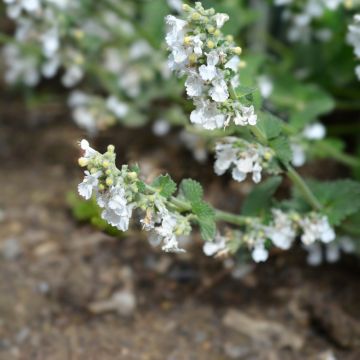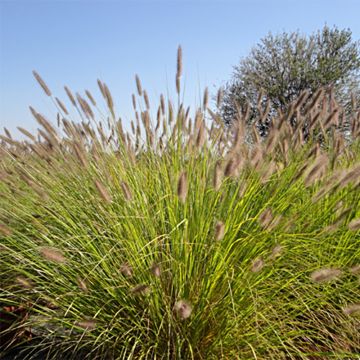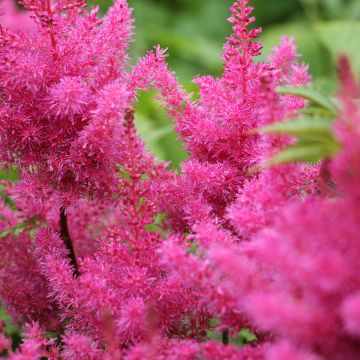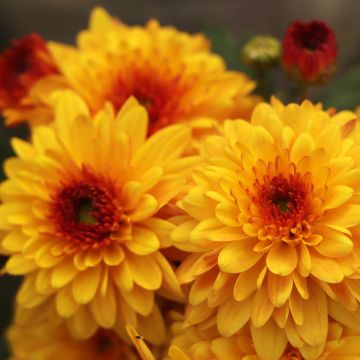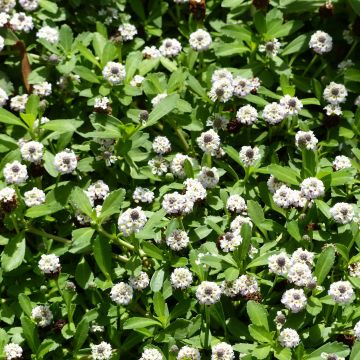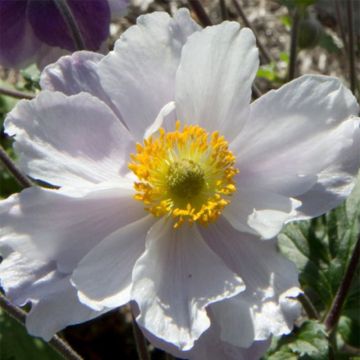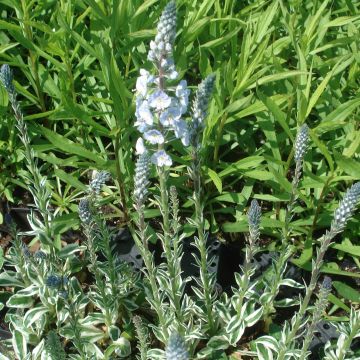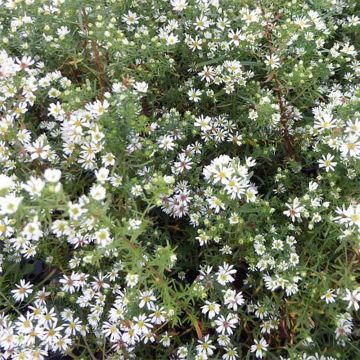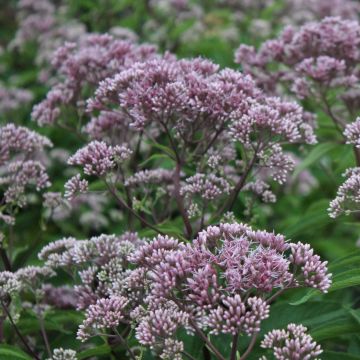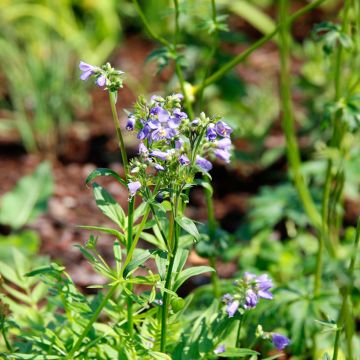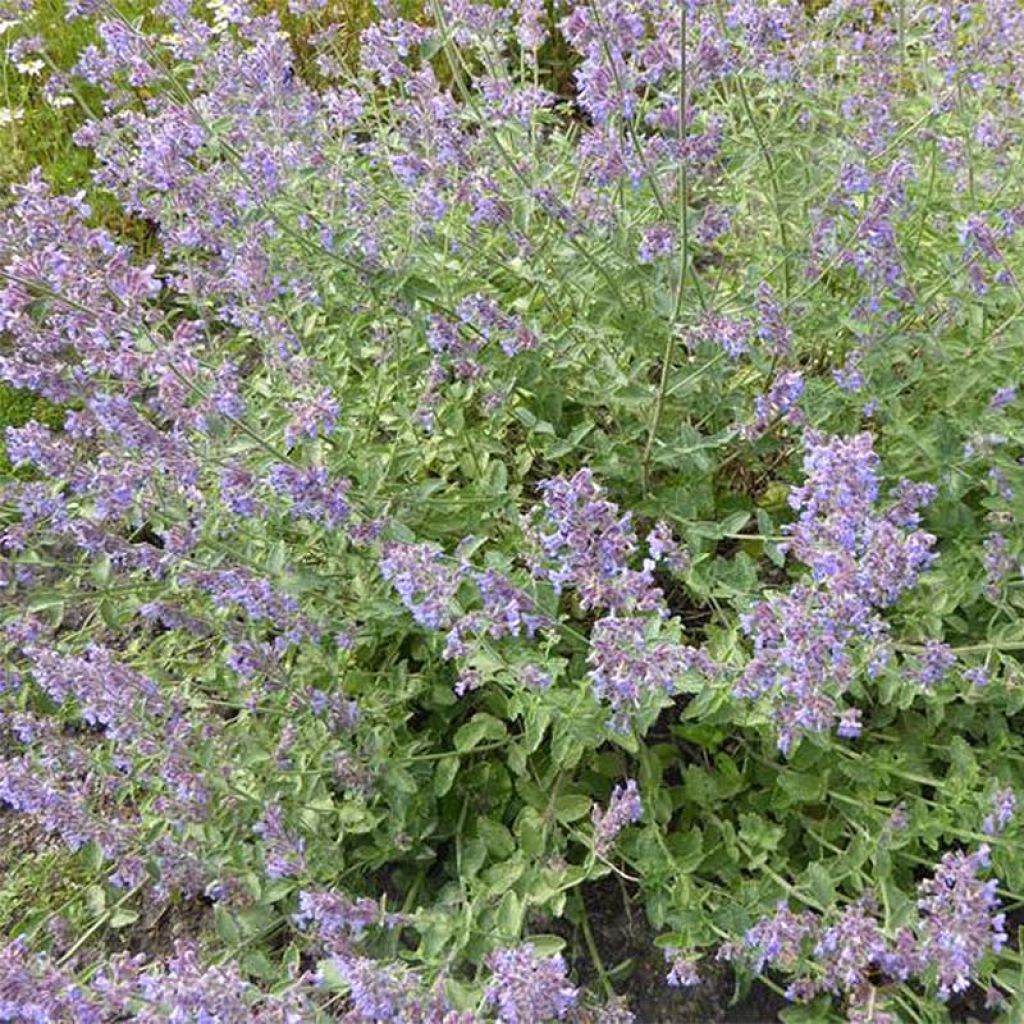

Nepeta Six Hills Gold - Catnip
Nepeta Six Hills Gold - Catnip
Nepeta x faassenii Six Hills Gold
Faassen's catnip, Catmint
Wonderful!
CR, 24/10/2024
This item cannot be shipped to the selected country
Delivery charge from €5.90
More information
Schedule delivery date,
and select date in basket
This plant carries a 12 months recovery warranty
More information
We guarantee the quality of our plants for a full growing cycle, and will replace at our expense any plant that fails to recover under normal climatic and planting conditions.
From €5.90 for pickup delivery and €6.90 for home delivery
Express home delivery from €8.90.
Does this plant fit my garden?
Set up your Plantfit profile →
Description
Nepeta Six Hills Gold is a very attractive perennial forming a beautiful clump of velvety and aromatic, grey-green leaves with a golden yellow edge. From June to October, long upright stems are crowned with spikes of lavender blue flowers.
Nepetas, also known as, Catmint, or Catnip, are part of the Lamiaceae family. The Nepeta x faassenii species resulted from a cross between Nepeta nepetella and Nepeta racemosa. The Six Hills Gold variety is a vigorous and robust herbaceous perennial with a bushy and dense habit, reaching a height of 70 to 90 cm (28 to 35in) and a spread of 60 cm (24in). This rapidly growing cultivar has deciduous, aromatic, variegated, narrow, ovate, dentate, light grey-green leaves, edged in yellow, 2 to 4 cm (1 to 2in) long. It produces numerous floral stems bearing lavender-blue flowers, 1 to 2 cm (0 to 1in) long from June to October which are floriferous and attractive to pollinating insects.
Nepetas are very easy and carefree, robust and fast-growing perennials, essential in the garden for their bushy shape, aromatic foliage, and relentless summer flowering.
Nepeta Six Hills Gold, with long-lasting flowering and bright variegated foliage, is a valuable plant in the garden, in full sun or partial shade, in a rockery, on a slope, within a perennial border, or even in a scree garden. It is well-suited for container cultivation on a terrace or balcony. This hardy species appreciates sunny locations and well-drained soil. Its long flowering stems make it an excellent cut flower for creating beautiful country-style bouquets. Its lavender-blue flowers will harmonize beautifully with yellow or orange flowers of summer perennials such as Daylilies, Kniphofias, and Rudbeckias, creating stunning contrasts. It will also complement perennials with pastel or dark colours, such as some Paniculate Phlox, purple Rudbeckias, Oriental Poppies, Japanese Anemones, and Knautias. It will look beautiful at the base of shrub and climbing roses, concealing their bare base.
Report an error about the product description
Nepeta Six Hills Gold - Catnip in pictures


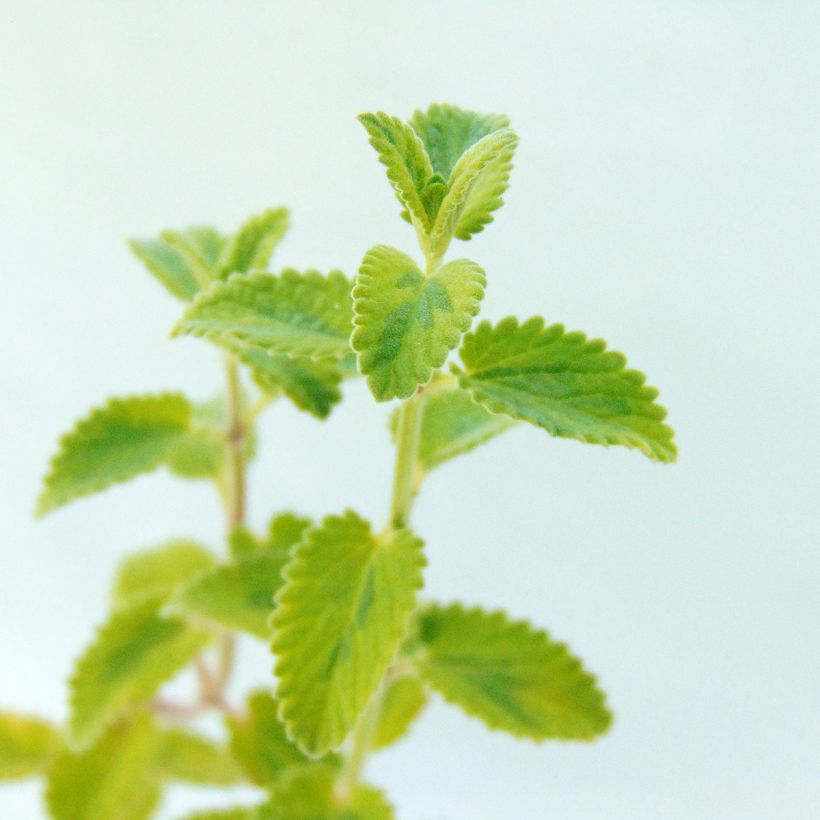

Flowering
Foliage
Plant habit
Botanical data
Nepeta
x faassenii
Six Hills Gold
Lamiaceae
Faassen's catnip, Catmint
Cultivar or hybrid
Other Nepeta - Catnip
Planting and care
Nepeta Six Hills Gold is a vigorous, easy-to-grow perennial, hardy down to -15°C (5°F) at least. It likes sun or light shade, ordinary, sandy, stony and poor, moist to dry soil well-drained in winter. In heavy soils add gravel and sand to improve drainage. Only water if the plant shows obvious signs of thirst. You can plant in autumn, but it is better done in spring so that the roots are well-developed before the winter cold. Let the clump dry out all winter to protect the crown from cold. Prune severely in early spring, before the start of growth. Remove faded stems regularly to encourage more. You can shear back the faded inflorescences to a height of 20 cm (8in) during summer to make the plant more compact and extend its flowering until autumn, or the first frosts. Divide the clumps in spring. Although resistant to diseases, young shoots of Nepetas are sometimes attacked by slugs, and its foliage may be affected by powdery mildew in dry summers.
Planting period
Intended location
Care
-
, onOrder confirmed
Reply from on Promesse de fleurs
Cottage garden perennials
Haven't found what you were looking for?
Hardiness is the lowest winter temperature a plant can endure without suffering serious damage or even dying. However, hardiness is affected by location (a sheltered area, such as a patio), protection (winter cover) and soil type (hardiness is improved by well-drained soil).

Photo Sharing Terms & Conditions
In order to encourage gardeners to interact and share their experiences, Promesse de fleurs offers various media enabling content to be uploaded onto its Site - in particular via the ‘Photo sharing’ module.
The User agrees to refrain from:
- Posting any content that is illegal, prejudicial, insulting, racist, inciteful to hatred, revisionist, contrary to public decency, that infringes on privacy or on the privacy rights of third parties, in particular the publicity rights of persons and goods, intellectual property rights, or the right to privacy.
- Submitting content on behalf of a third party;
- Impersonate the identity of a third party and/or publish any personal information about a third party;
In general, the User undertakes to refrain from any unethical behaviour.
All Content (in particular text, comments, files, images, photos, videos, creative works, etc.), which may be subject to property or intellectual property rights, image or other private rights, shall remain the property of the User, subject to the limited rights granted by the terms of the licence granted by Promesse de fleurs as stated below. Users are at liberty to publish or not to publish such Content on the Site, notably via the ‘Photo Sharing’ facility, and accept that this Content shall be made public and freely accessible, notably on the Internet.
Users further acknowledge, undertake to have ,and guarantee that they hold all necessary rights and permissions to publish such material on the Site, in particular with regard to the legislation in force pertaining to any privacy, property, intellectual property, image, or contractual rights, or rights of any other nature. By publishing such Content on the Site, Users acknowledge accepting full liability as publishers of the Content within the meaning of the law, and grant Promesse de fleurs, free of charge, an inclusive, worldwide licence for the said Content for the entire duration of its publication, including all reproduction, representation, up/downloading, displaying, performing, transmission, and storage rights.
Users also grant permission for their name to be linked to the Content and accept that this link may not always be made available.
By engaging in posting material, Users consent to their Content becoming automatically accessible on the Internet, in particular on other sites and/or blogs and/or web pages of the Promesse de fleurs site, including in particular social pages and the Promesse de fleurs catalogue.
Users may secure the removal of entrusted content free of charge by issuing a simple request via our contact form.
The flowering period indicated on our website applies to countries and regions located in USDA zone 8 (France, the United Kingdom, Ireland, the Netherlands, etc.)
It will vary according to where you live:
- In zones 9 to 10 (Italy, Spain, Greece, etc.), flowering will occur about 2 to 4 weeks earlier.
- In zones 6 to 7 (Germany, Poland, Slovenia, and lower mountainous regions), flowering will be delayed by 2 to 3 weeks.
- In zone 5 (Central Europe, Scandinavia), blooming will be delayed by 3 to 5 weeks.
In temperate climates, pruning of spring-flowering shrubs (forsythia, spireas, etc.) should be done just after flowering.
Pruning of summer-flowering shrubs (Indian Lilac, Perovskia, etc.) can be done in winter or spring.
In cold regions as well as with frost-sensitive plants, avoid pruning too early when severe frosts may still occur.
The planting period indicated on our website applies to countries and regions located in USDA zone 8 (France, United Kingdom, Ireland, Netherlands).
It will vary according to where you live:
- In Mediterranean zones (Marseille, Madrid, Milan, etc.), autumn and winter are the best planting periods.
- In continental zones (Strasbourg, Munich, Vienna, etc.), delay planting by 2 to 3 weeks in spring and bring it forward by 2 to 4 weeks in autumn.
- In mountainous regions (the Alps, Pyrenees, Carpathians, etc.), it is best to plant in late spring (May-June) or late summer (August-September).
The harvesting period indicated on our website applies to countries and regions in USDA zone 8 (France, England, Ireland, the Netherlands).
In colder areas (Scandinavia, Poland, Austria...) fruit and vegetable harvests are likely to be delayed by 3-4 weeks.
In warmer areas (Italy, Spain, Greece, etc.), harvesting will probably take place earlier, depending on weather conditions.
The sowing periods indicated on our website apply to countries and regions within USDA Zone 8 (France, UK, Ireland, Netherlands).
In colder areas (Scandinavia, Poland, Austria...), delay any outdoor sowing by 3-4 weeks, or sow under glass.
In warmer climes (Italy, Spain, Greece, etc.), bring outdoor sowing forward by a few weeks.

































